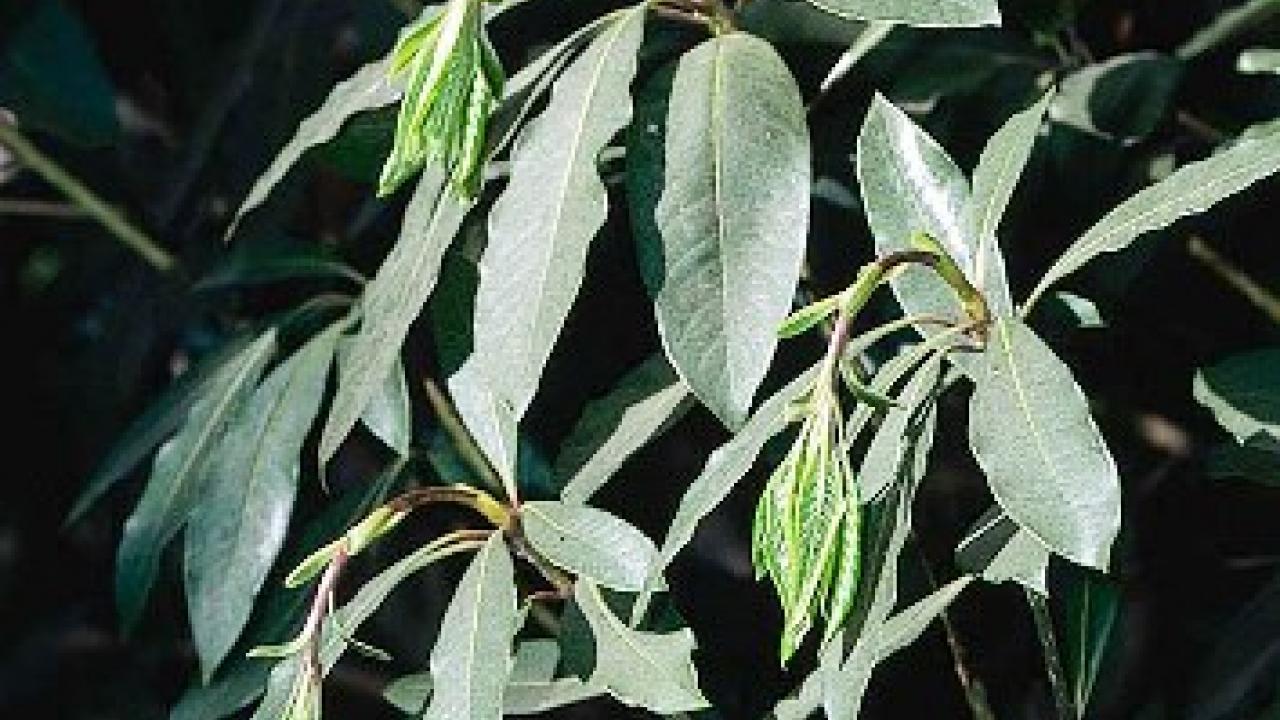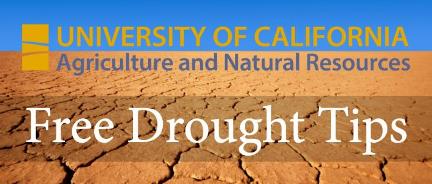
Water Conservation: The New 'Normal' - Drought Irrigation Strategies
Since water conservation will be an ongoing practice in California, University of California scientists are continually developing practical information for agriculture, rangelands, urban landscapes, and animal production.
This series of publications was produced by UC experts throughout California. Published by UC ANR, authors include professors and Cooperative Extension specialists in the Dept. of Plant Sciences at UC Davis -- Charlie Brummer, Mark Lundy, Loren Oki, Dan Putnam, and Ken Shackel.

Publications are downloadable and free.
Drought Irrigation Strategies for Alfalfa
Alfalfa is California's largest user of agricultural water, with about 1 million acres in production most years. Here are some strategies that will help you weather a drought.
Drought Tip: Crop Salt Tolerance
Soil salinity is an important stressor affecting irrigated crops, and is often exacerbated during drought. Learn about crop response to salinity, and basic steps for monitoring and management.
Drought Tip: Drought Management for California Almonds
Almond trees have a great tolerance to drought, but the nut crop may fall very low when available water is in short supply. Learn to make the best of what water is available.
Drought Tip: Drought Strategies for Alfalfa
Drought conditions require a whole new approach to alfalfa production. Learn how to keep alfalfa crop losses to a minimum under a limited-water regime.
Drought Tip: Drought Strategies for Beef Cattle Culling
Removing animals from the herd is the most direct method of reducing forage consumption on drought-stricken rangeland, but culling requires navigating current challenges while rebuilding for the future.
Drought Tip: Drought Strategies for California Prune Production
Effective irrigation decisions water use in prune orchard. Included is a wide range of water supply availabilities, from no shortage to severe shortages.
Drought Tip: Drought Strategies for California Walnut Production
Water curtailments at any growth stage affect walnut crop productivity and quality. Learn about tree and walnut development stages and corresponding water use, and impacts of water deprivation.
Drought Tip: Drought Strategies for Feeding Cattle Grazing Annual Grassland
Drought leads to lack of forage production on rangelands, with two management scenarios: sell to reduce forage demand, or supplement feeding. This helps producers weigh options during drought years.
Drought Tip: Fog Contribution to Crop Water Use
As fog passes through a crop, some of the water is intercepted by the plant, much like light rainfall. Learn to estimate fog contribution to crop water use using daily evapotransipration data.
Drought Tip: Irrigating Citrus with Limited Water
Citrus requires some water year-round. Proper irrigation system design, installation, maintenance and scheduling can help citrus production during drought.
Drought Tip: Keeping Plants Alive under Drought or Water Restrictions
Information on keeping outdoor plantings alive during drought or water restrictions. Topics include symptoms of water stress, conserving water in the landscape, and helping plants survive drought.
Drought Tip: Managing Irrigated Corn during Drought
In corn, even small water deficits reduce productivity. This drought tip will help California corn growers calculate the amount of water their crop requires under various conditions.
Drought Tip: Managing Irrigated Pasture during Drought
Irrigated perennial pastures are important in drought when annual rangeland productivity is compromised. Learn to manage pasture during drought: grass selection and management practices.
Drought Tip: Managing Salts by Leaching
Accumulated salts can damage crops if they are not leached below the root zone. Leaching can remove salts, but the soil must have adequate drainage. Learn to manage salts by leaching.
Drought Tip: Reclaiming Saline, Sodic, and Saline-Sodic Soils
Salt-affected soils cause poor plant growth, affect crop production, and reduce water use efficiency. Learn about the reclamation of salt-affected soils for water management and crop production.
Drought Tip: Supplemental Feeds for Cattle Operations during Drought
Learn about the variety of supplemental feeds available to California ranchers, and making decisions for your cattle operation, based on budget and cattle nutrient needs.
Drought Tip: Use of Graywater in Urban Landscapes in California
Learn what graywater is, the basics of laundry-to-landscape systems, and the benefits and risks of graywater systems to humans, other animals, and plants.
Drought Tip: Use of Saline Drain Water for Crop Production
Recent research on the use of saline water for agricultural crop irrigation, along with water management to maintain crop production and acceptable root zone soil salinity.
Drought Tip: Use of Shallow Groundwater for Crop Production
Depending on the crop and soil structure, shallow groundwater (any water within the first 6 feet or so of soil depth) can make a significant contribution to crop production and farm survival.
Drought Tip: Use of Treated Wastewater for Crop Production
Learn about the considerations and concerns around the use of reclaimed water for agriculture, as well as recommendations for growers, including adverse public perception.
Drought Tip: Water Quality Guidelines for Vegetable and Row Crops
Salinity's detrimental impact on irrigated crops can be exacerbated during drought. Learn about salt tolerance guidelines for vegetable and row crops, along with boron tolerance.
Rangeland Management Series: Livestock Management During Drought
When drought reduces the supply of forage feed, ranchers allocate the available feed where it will do the herd the most good. Learn about the scientific basis for making that decision.
(Article by Ann Filmer, Dept. of Plant Sciences, UC Davis)
- - - - - - - - - -
[For past Plant Sciences news, go to https://news.plantsciences.ucdavis.edu/]
